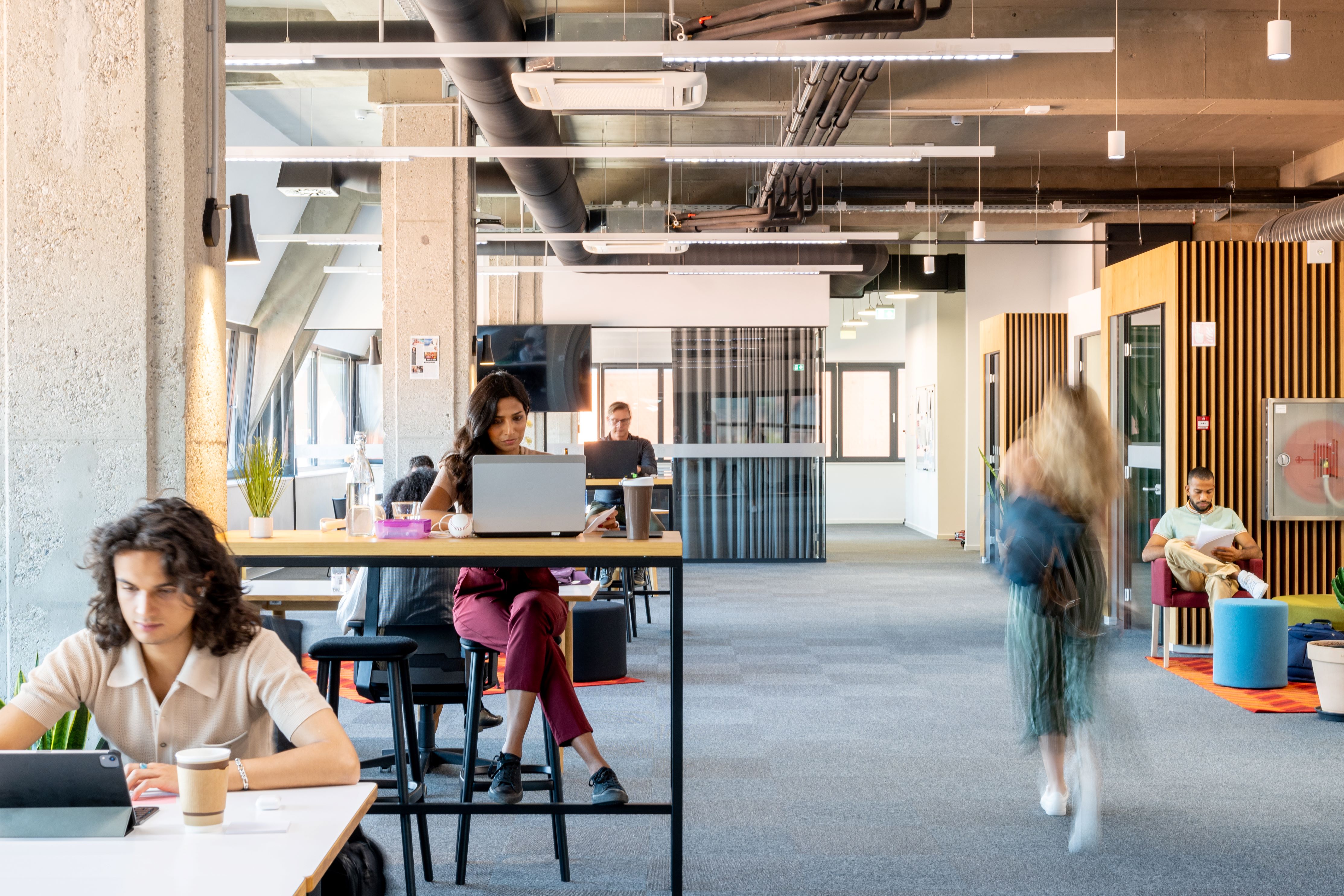
The psychological landscape of hybrid working is becoming an increasingly important topic for companies to take on board. We caught up with one of our partners from our Manchester office, David Laws, to learn more about his view on the importance of striking the right balance between working remotely and office working for the benefit of employees and businesses.
One of the major outcomes of the last three years has been a global shift towards disrupted working models, and the discussion where the tangible, physical spaces of work should be.
However, beneath the surface lies a complex psychological tapestry that influences and shapes the current workplace experience – these are the less visible, but equally significant, psychological dimensions of ‘hybrid’ working.
Traditionally, the workplace has been a space where all team members could benefit from the proximity to co-workers, whether senior or junior to guide, mentor and share experiences, that help inform, educate and foster culture.
Serendipitous encounters or impromptu discussions beside a senior’s desk are not merely about the exchange of work-related information and social matters such as the previous night’s football results or television programmes but are pivotal in shaping a young professional’s growth. It is often referenced that we have one mouth and two ears for a reason – the inference being the higher value attributing to listening before speaking. These interactions however subliminal provide the bedrock for soft business skills and over time develop a sense of security and belonging, which can be crucial for those who may ordinarily feel intimidated by those of a senior position, if not familiar with the character or personality of the individuals.
The right office environment is vital for the learning and development of younger colleagues particularly those entering the workforce after school, college or university because it provides experiences which cannot be replicated by working remotely.
One of the most significant advantages of being in a culturally positive workplace is the opportunity for face-to-face mentorship which is a two-way benefit since older colleagues can also learn from younger members of staff, often centred around social media!
Younger colleagues benefit immensely from direct interaction with experienced colleagues to watch and learn how they deal with difficult situations or handle clients as well as having an immediate opportunity to ask questions and receive feedback, fostering a strong learning dynamic that is not included in any formal training programmes.
Collaboration is a cornerstone of success in most companies and being amongst others in the office helps facilitate those brainstorming sessions and impromptu discussions that can lead to innovative ideas and foster a culture of teamwork.
The workplace gives everyone the opportunity to learn more about the company’s culture and values which is crucial for professional growth and will boost confidence, contributions and empowerment as staff to take on more significant challenges and responsibilities.
The importance of this should not be under-estimated. Gallup’s State of the Global Workplace 2024 report which has just been released highlights that many employees feel like they’re engaged in an uphill struggle. 41% are feeling “a lot of stress” and globally, one in five employees in the report say they experience daily loneliness. This percentage is higher for employees under 35 and lower for those aged over 35. Fully remote employees report significantly higher levels of loneliness (25%) than those who work fully on-site (16%).
The report highlights that wellbeing among younger employees dropped in 2023, and it says employers should address mental health support to help colleagues thrive in life and engage at work to build productive, high-performing teams.
Flexibility is now the new currency of the workforce. As the world evolves, so do the priorities of its workforce with many employees willing to trade off other benefits for a more adaptable work-life balance.
The psychological impact of this shift is quite profound, employees who exercise greater control over their schedules often report higher job satisfaction and reduced stress levels which, in time, leads to an improved overall wellbeing.
The daily commute, once a non-negotiable aspect of working life, has now become a significant influencer in job choice. With remote working options available, the necessity to endure long and even stressful journeys to the office is no longer seen as an absolute must five days a week.
Hybrid working models have the potential to foster inclusivity by accommodating diverse needs and preferences. They offer a solution for those re-entering the workforce, seeking the social interaction and structure that office life provides, while also catering for those who prefer the quiet focus of home working.
The debate about the effectiveness of office versus remote work is ongoing. While some employees yearn for the social aspects and structured environment of the office, others thrive in the autonomy that remote work offers.
It is essential to acknowledge that no one size fits all and it is clear that the hybrid model only works smoothly if it is well organised, for example, when staff go into the office on the same day and take part in social activities to get to know each other on a personal level away from their desks.
Remote working has undoubtedly revolutionised how we operate, but the office remains an essential learning ground for everyone.
Being physically present in the office contributes significantly to professional development and striking a balance between remote and in-office work is the key to harnessing employees’ full potential to ensure that everyone thrives in all aspects.





